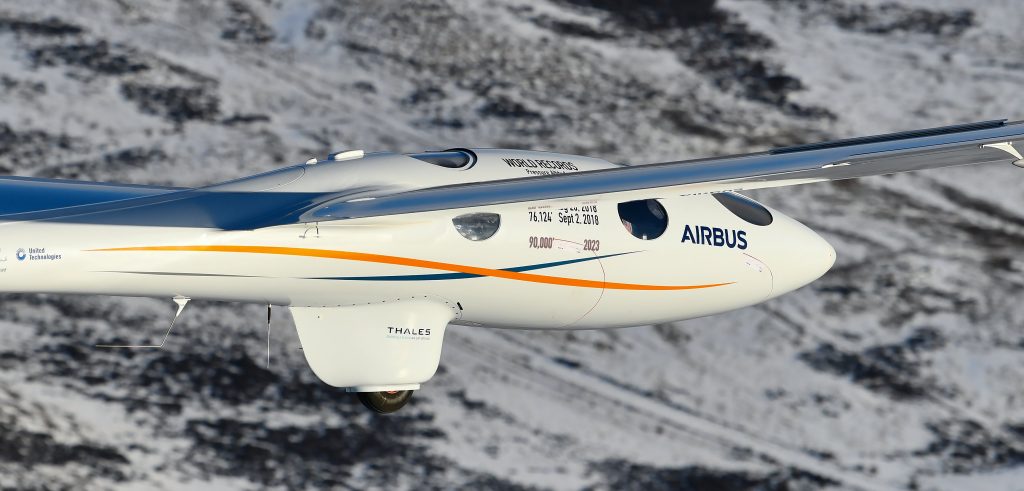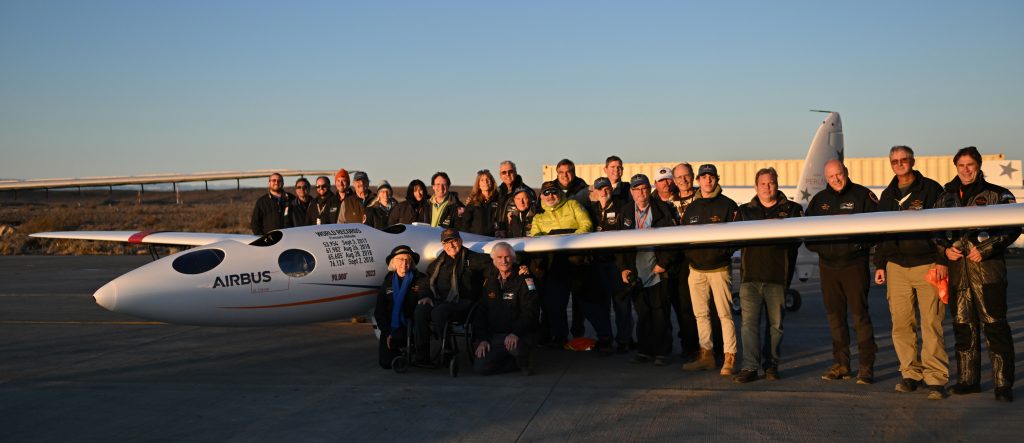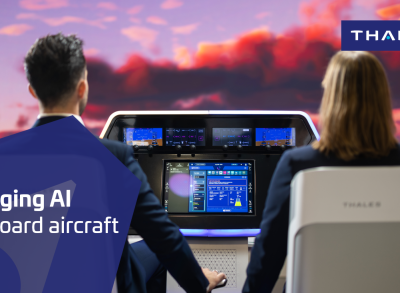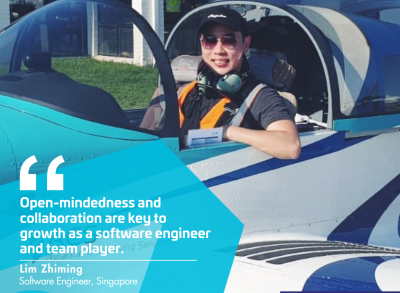Perlan and Thales demonstrating how AI can transform flights into safer, more efficient, and predictable operations

Picture credit: James Darcy
The Airbus Perlan Mission II initiative, led by Nevada-based atmospheric research non-profit The Perlan Project, began its fifth experimental flight campaign in early August 2023 at Comandante Armando Tola International Airport in El Calafate, Argentina. Initially involved for connectivity needs through the supply of the FlytLink connectivity demonstrator, Thales also brought a support in Artificial Intelligence for trajectory calculations.
The Perlan team’s effort focused on continuing its mission to advance aerospace engineering and scientific research, explore areas of the stratosphere never before reached by an experimental zero-emissions pressurized glider – the Perlan 2 – and share its journey and research with the world. The onboard Thales AI technology played a significant role in identifying upward routes for the engineless aircraft through complex stratospheric waves amplified by the Polar Vortex and find safe routes for the pilots through ever-changing meteorological and atmospheric conditions. As a result, the Perlan 2 glider was able to reach 60,300 feet during the 2023 flights, literally taking Thales’s FlytLink connectivity demonstrator to new, unprecedented heights!

Picture credit: James Darcy
Behind The Perlan Project
Passionate minds, scientists, innovation builders, and daring dreamers have gathered within the circle of The Perlan Project. They share a common mission: to explore our world at altitudes that defy imagination using the potential of innovative aerospace technologies.
Before the intervention of Thales's Artificial Intelligence technology, The Perlan Project faced a formidable challenge. This encompassed the delicate management of ever-changing meteorological and atmospheric conditions creating difficulties in anticipation, especially for piloting; being able to manage and maximize energy efficiency; and minimizing risks for pilots while designing efficient flight plans.
Why the Choice of Fuzzy AI

Thales's Artificial Intelligence offering is based on Genetic Fuzzy Tree (GFT) principles, a clever fusion of fuzzy artificial intelligence (Fuzzy AI) and optimization through genetic algorithms. According to Thales AI Chief Architect Nick Ernest (pictured right with head pilot Jim Payne getting the AI connected to the cockpit), “Whereas other AIs generally provide black box solutions that cannot be mathematically proven to always follow safety rules, we deliver high-performant AI models that provide both explainability and the ability to prove adherence to safety requirements. We also enjoy proven capabilities in similar routing and planning applications. For this application, we are able to draw on the utilization of multiple environmental models, simulated glider flights, and lessons learned from previous flights to design the safest and most efficient routes.”
Optimized data for efficient transmission
Moreover, Thales's AI works closely with the FlytLink connectivity demonstrator, ensuring optimal connectivity between the research aircraft and the ground.
The results of the AI analysis were transmitted to the pilot through enhanced user interfaces on board the aircraft. These interfaces presented critical information on flight plans and necessary adjustments for altitude objectives in a clear and concise manner. Both efficiency of connectivity together with the optimized interfaces and content enabled an uninterrupted communication at all stages and altitudes of the flight.
A valuable flight assistant for the pilot
The Perlan Project had the ambitious goal of reaching 90,000 feet altitude during its flights in Argentina in July and August 2023, an extremely challenging record to achieve.
AI played a vital part in the endeavor, predicting that the record would be unattainable if weather conditions remained unchanged. The AI also brought unparalleled precision to the quest for stratospheric heights, significantly reducing the time required to reach extreme altitudes. This optimization allowed for more efficient use of oxygen and battery capacity, transforming the flights into safer, more efficient, and predictable operations.

The team pictured in Argentina (photo: James Darcy).
That summer, the trials in Argentina were met with partial success. In the words of Nick Ernest, “Although the record was not surpassed, the experience has demonstrated that humans and machines can learn together. The AI had indeed anticipated the difficulties posed by suboptimal atmospheric and weather conditions, and its predictions matched well with the actual results despite an incredibly noisy and difficult problem space. The AI also played a crucial role in analysis and decision-making throughout The Perlan Project's mission in Argentina. It ingested a myriad of real-time data from various sources, including sensors on board the aircraft. The AI used complex environmental models to make flight strategy predictions that took into account wind variations, atmospheric pressure, and ever-changing weather conditions.”
 Ultimately, humans and machines complemented each other, forming an unbeatable team where technology acted as a natural extension of human thought. This synergy between Fuzzy AI, satellite communication, and intuitive interfaces brought to life a groundbreaking solution that transcended the boundaries of aeronautical exploration.
Ultimately, humans and machines complemented each other, forming an unbeatable team where technology acted as a natural extension of human thought. This synergy between Fuzzy AI, satellite communication, and intuitive interfaces brought to life a groundbreaking solution that transcended the boundaries of aeronautical exploration.
According to Ed Warnock, CEO, The Perlan Project, Inc. (pictured), “Thales AI significantly improved how our aircraft and pilots operate in extreme conditions when flying through the ozone hole inside complex stratospheric waves generated by the Polar Vortex. Our partnership with Thales this year provided increased safety through real-time internet connections and better mission resource management through AI predictions of optimal paths upward through these extremely challenging conditions.”
Looking forward to possible future seasons, flights will be supported by AI very early in the process compared to this previous session. Nick Ernest: “Continued adoption and testing with AI will help Perlan reach a new step towards the target of 90,000 feet. It will provide uncertainty reductions to support the project and identify the best routes and moment to fly for the glider.” He also adds that “the insights from this case study can also be applied to other similar situations or clients.”




